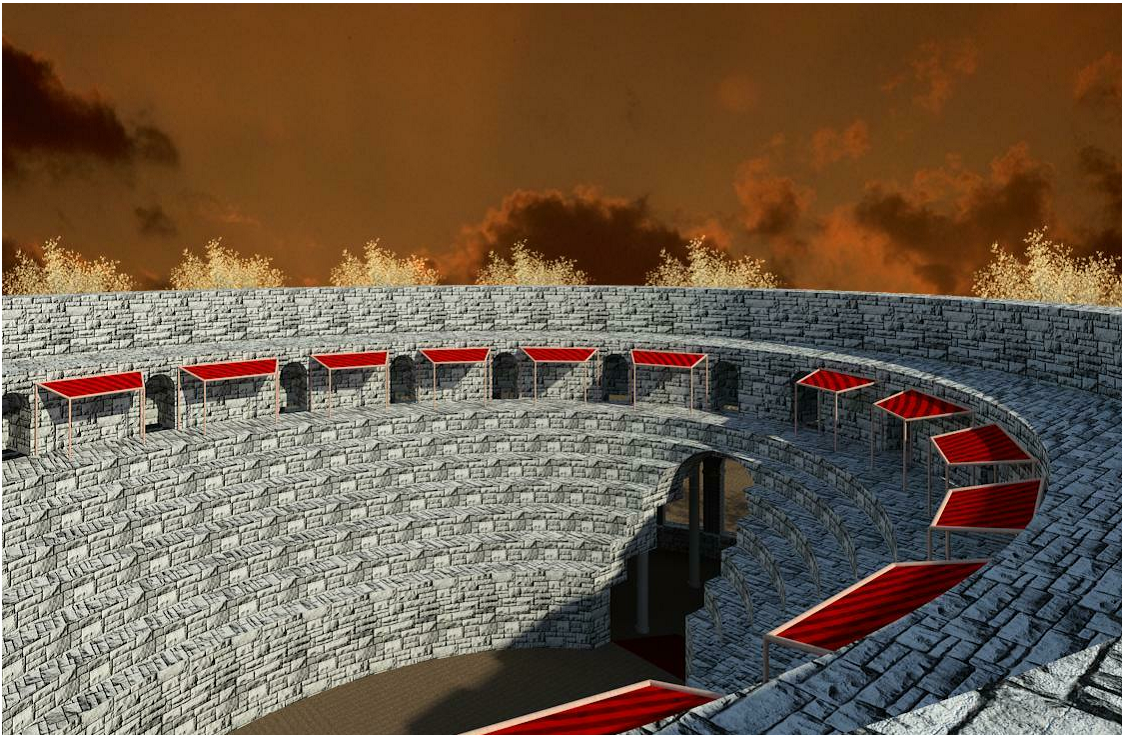On Friday I read a few excerpts from Paul Aubin's book: Renaissance Revit: Creating Classical Architecture with Modern Software. This is an extremely useful book, not only for creating Renaissance Revit projects, but more to delve into the extremely complex geometrical forms one can create in Revit's family environment. I will most definitely be purchasing my own copy very, very soon!
Now, I tend to get insomnia every couple of days, and I thought to myself: Instead of staring at the ceiling for 6 hours, how about putting the time I am awake to productive use? Based on Paul's work, the Parametric Revit Roman Arena was born.
The idea was to spend my Saturday morning only modelling Roman Arch families, but things got out of hand... I ended up created the entire arena, topography, as well as a few rendered images.
The site was sculpted to suit my imagination (Which was already dulled by a lack of sleep), to an estimated arena physical size (Gauged from some Wikipedia images on my cellphone)
3D Plan Views were created per level, and filmstripped together to create a visual "Construction Timeline".
Some selected rendered images are shown below:
1. Area Exterior View from Top Seating Level
2. Arena Entrance View during daytime
3. Arena Entrance View at night with torches placed on interior and exterior walls
The torches were a bit tricky, not only for modelling purposes, but also for visualization. Yes, one could model a flame at the torch's top, but how do you manipulate the torch's light source? As far as my knowledge goes, one cannot manipulate a light source's initial color values to below 1800 Degrees Kelvin (A match flame is set at 1700 Degrees Kelvin, while a candle flame is set to 1800 degrees Kelvin), nor can one have a gradient light source representation (To represent a torch flame). It should be easy enough to either add fire by linking the Revit model into 3ds Max, or even to post process the scene Photoshop (I am not a visualization specialist), but I will stay stubborn and continue to find a workaround in the native Revit environment.








No comments:
Post a Comment